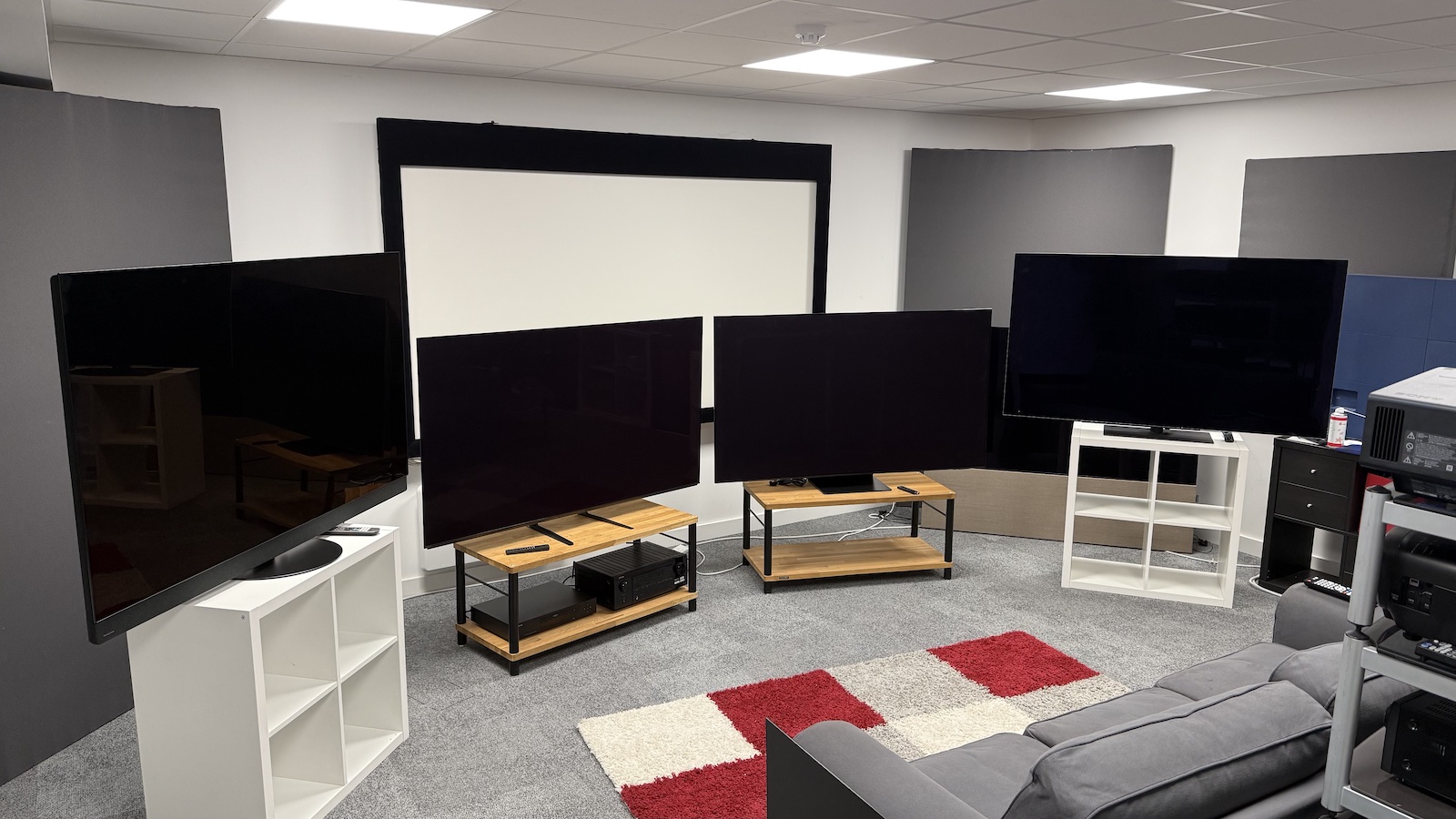Bowers & Wilkins Px8 S2 vs Sony WH-1000XM6: which flagship wireless headphones are better?
B&W's new pair take on the market leaders
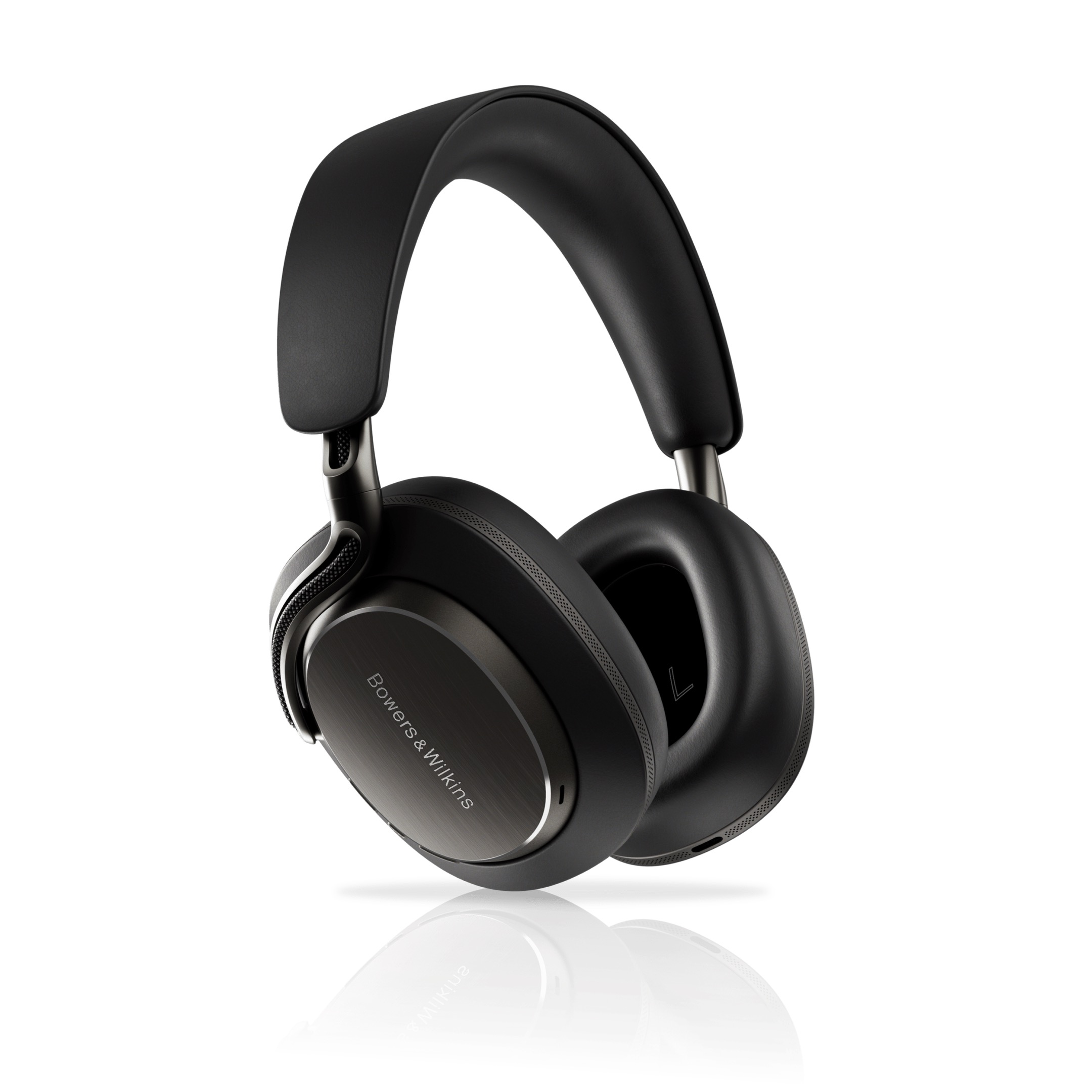
Bluetooth: 5.3
Codec support: aptX Adaptive 24-bit/96kHz, aptX Lossless, SBC, AAC
Battery life: 30hrs
Weight: 310g
The Bowers boast superior build quality to the Sonys. They also sound more detailed and deliver a wonderfully polished sonic performance. ANC is good, but not up to Sony's standards, and the ergonomics could be better.
Pros
- Impressive spaciousness
- Sensational dynamics and detail
- Comfortable to wear
- Luxurious build
Cons
- Noise-cancelling should be better for the money
- Unergonomic controls
- A couple of app/connectivity quirks
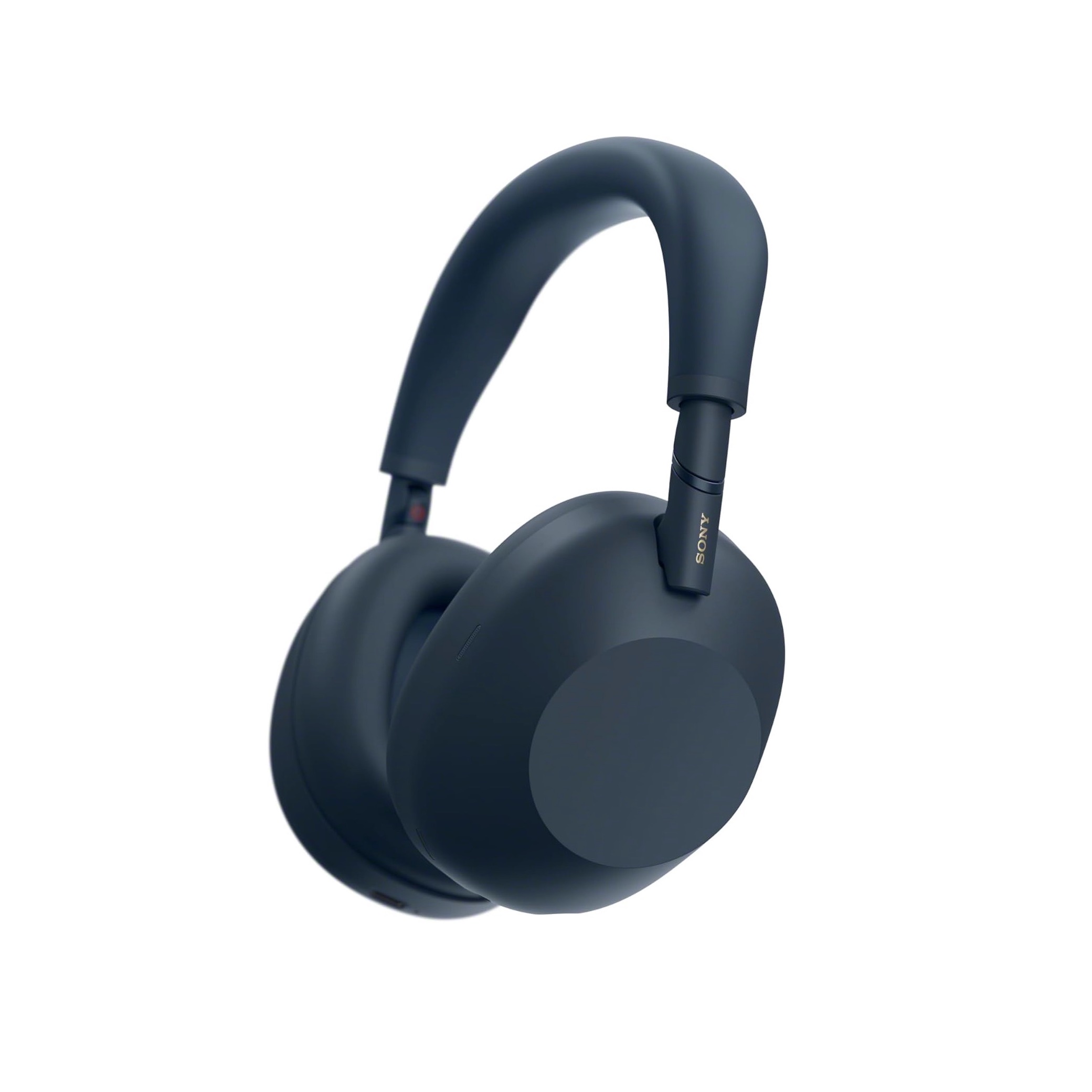
Bluetooth: 5.3
Codec support: SBC, AAC, LDAC, LC3
Battery life: 30hrs
Weight: 254g
Cheaper, more versatile, superb-sounding and with better noise cancellation, the XM6 are the better bet for most people. Their app is also more comprehensive, and there's always the prospect of a deal in the sale. But they can't touch the B&W for build quality, and their sound isn't quite up to the same level.
Pros
- Exceptional levels of detail
- Great sense of dynamism
- Spacious, musical sound
- Superb ANC and call quality
Cons
- No aptX HD support
- Case is still on the large side
- No audio via USB-C
Bowers & Wilkins' headphones are plenty luxurious, perform very well indeed and cost a pretty penny. Indeed, they usually make flagship pairs like the Sony WH-1000XM6 look cheap by comparison.
Its new pair is no different. The B&W Px8 S2 follow the five-star Px8, and promise to be the brand's "best sounding headphones" so far. Given its pedigree, that's quite some boast.
But if it wants to best Sony's finest, it certainly has a fight on its hands. Not only are the XM6 cheaper, they're terrific all rounders.
Can B&W make good on its word? Let's find out.
Bowers & Wilkins Px8 S2 vs Sony WH-1000XM6: price
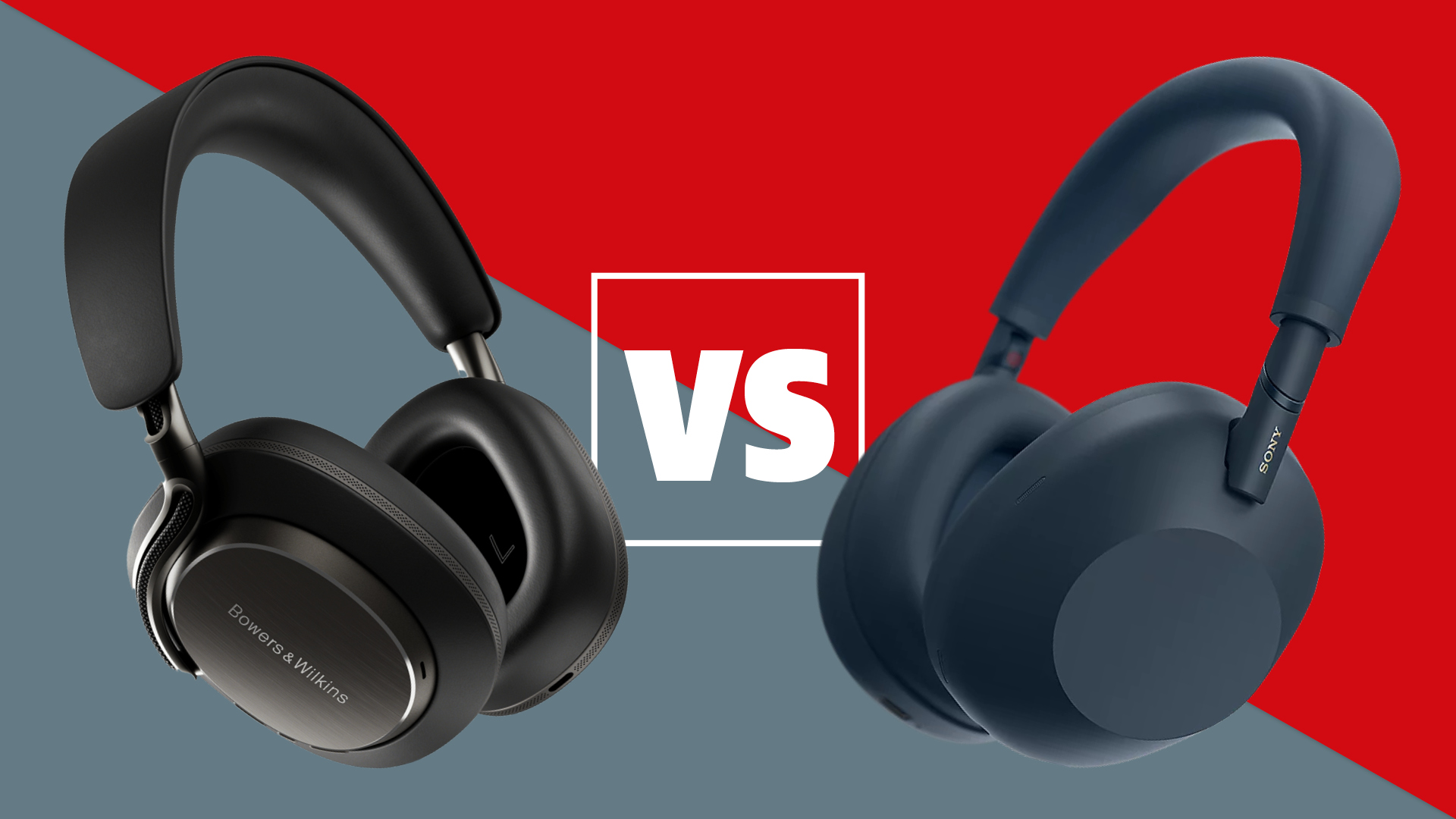
- B&W Px8 S2 are more expensive than the Sony WH-1000XM6
- The XM6 are older, so are more likely to be discounted
- Sony headphones are often discounted during sales
Both of these are flagship pairs, which fit most people's definition of premium. But they're actually priced very differently.
Bowers & Wilkins is a higher-end brand than Sony, and as such uses more premium materials in its headphones. Of course, this comes with a premium. The Px8 S2 cost £629 / $799 / AU$1,299. Ouch.
The Sony WH-1000XM6 still aren't cheap, at £400 / $450 / AU$699. But they look positively affordable next to B&W's finest.
The latest hi-fi, home cinema and tech news, reviews, buying advice and deals, direct to your inbox.
Remember also that the XM6 have been available for a few months, whereas the Px8 S2 are brand new. Add the fact that Sony devices are often discounted during big sales events, and the XM6 are far more likely to see a deal this sales season.
** Winner: Sony WH-1000XM6 **
Bowers & Wilkins Px8 S2 vs Sony WH-1000XM6: design
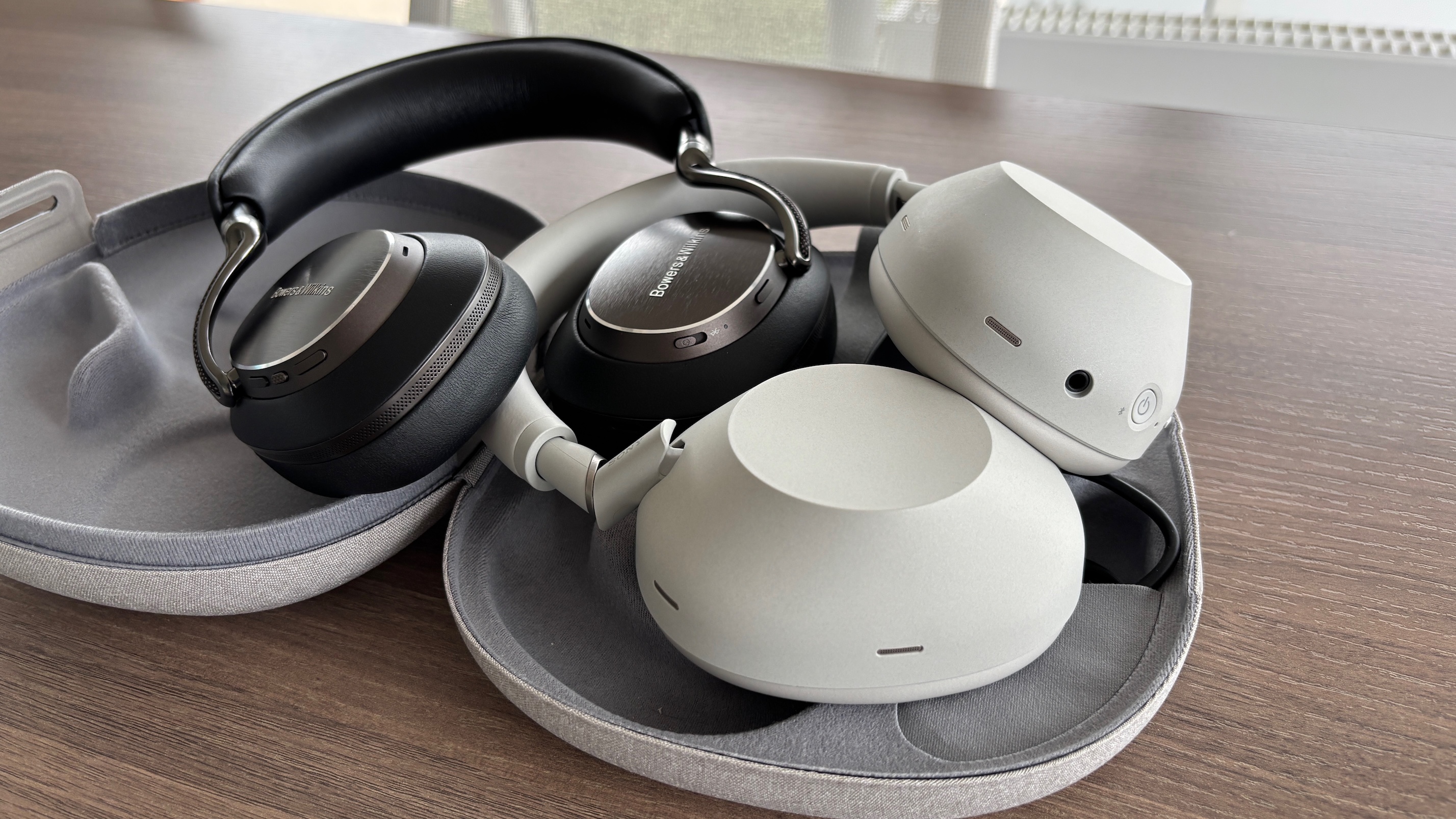
- The Px8 S2's build quality is higher than the Sony XM6's
- The Px8 S2 are heavier than the XM6, but still very comfortable
- The XM6 can fold up into a ball for easy storage
- The XM6 are still well made and come in more finishes
The Px8 S2 are noticeably more luxurious than the XM6, which isn't surprising given the difference in price. It's also not surprising given the PX8 S2's provenance.
They carry over the premium materials of the original Px8, with soft, plush nappa leather on the headband, earcups and earpads. Some chunky cushioning can heat up your ears during a long listen, but that wasn't an issue we encountered with the PX8 S2.
The arms are colour-coordinated and made of cast aluminium, and their movement feels precisely engineered. They are over 50g heavier than the XM6, but we never felt weighed down by them.
The earpads and clamping force also give the headphones a slightly different fit compared to the XM6 – the Bowers feel a bit more precise in place on your head, while the Sonys spread their cushioning more. At the end of the day, though, this will come down to personal preference.
The Px8 S2 ear cushions and headband have been redesigned, and can now be replaced if need be (though only by trained service engineers). The exposed cabling is a nice nod to the P5, B&W's first-ever headphones, which launched in 2010.
While still a flagship pair, the XM6 are a very different proposition in terms of design.
They've been overhauled significantly since the XM5, with hinges making a return from earlier pairs. This means they can fold up into a ball ready to be stashed in a bag or pocket.
The headband is wider and flatter than the XM5's, and with the cushioned earcups provides a comfortable fit with a slightly tighter clamping pressure than the XM5.
Touch controls again come as standard, and they're again nice and responsive.
The Px8 S2 are streets ahead in terms of materials and build quality – you can really see what your extra outlay gets you. Though the Sonys are still very well made and intuitive to use, and they come in one more finish than the B&W (though we expect the Px8 S2 to launch in more colours at some point).
** Winner: Bowers & Wilkins Px8 S2 **
Bowers & Wilkins Px8 S2 vs Sony WH-1000XM6: features
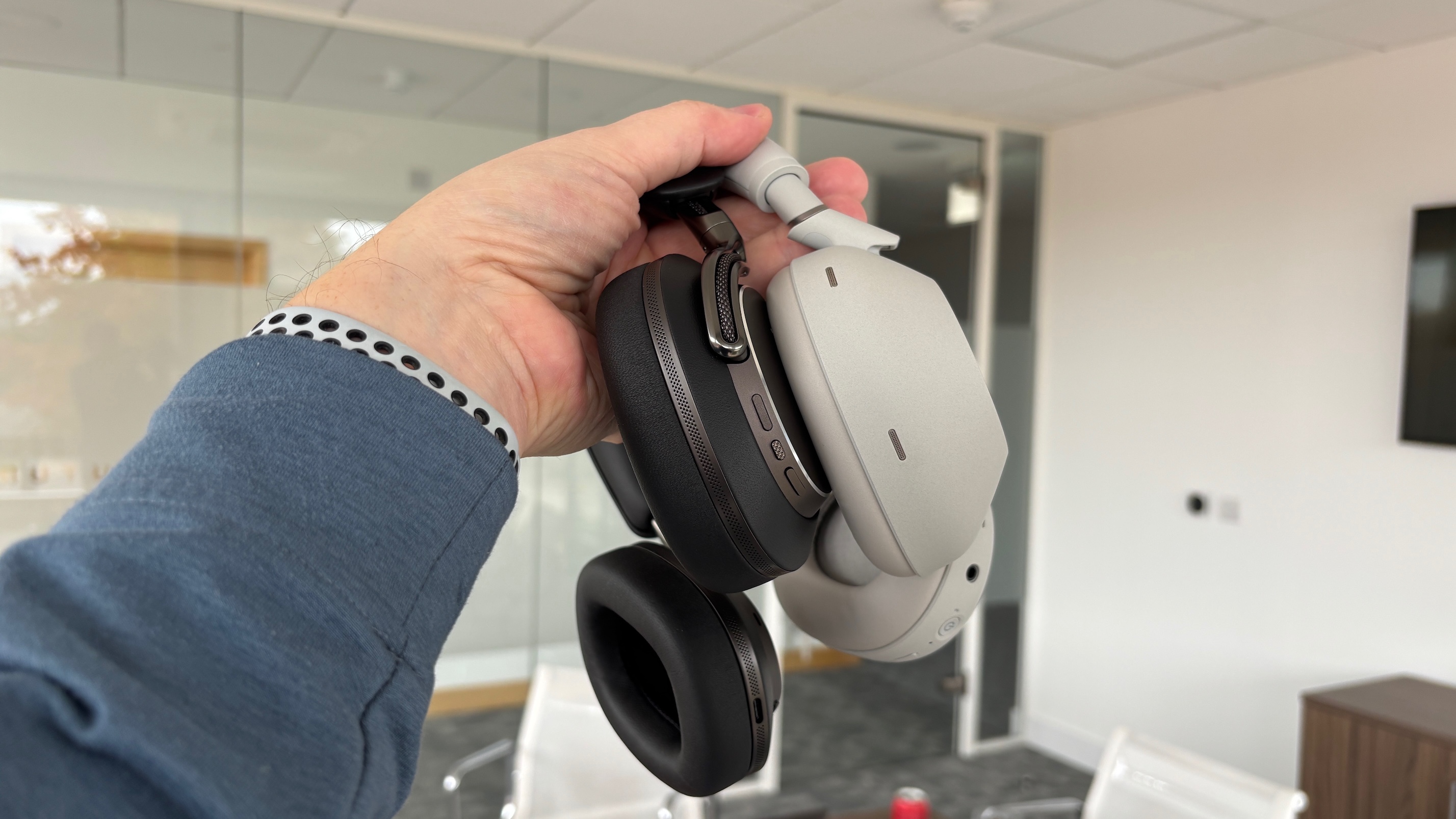
- The Px8 S2's buttons are small and difficult to reach
- Both pairs have a 30-hour battery life
- The XM6 don't support wired listening, but the Px8 S2 do
- The XM6 have the better app, and more extensive feature set
B&W has played around with the physical controls on the S2, but we think they feel less ergonomic. The buttons are now smaller than the previous model, which makes them tricky to use, especially given some of their locations.
The Px8 S2 have the same size of dynamic carbon cone driver as the first-gen model, but with a stiffer chassis and motor system first used in the five-star Px7 S3.
The new driver unit has fixing on its edges that allow it to be pinned down more tightly in the enclosure, and they can also be removed should one need replacing at any point.
They also use the same amplifier and DSP engine as the Px7 S3, but tweaked slightly for the revamped carbon driver.
The XM6 use a new 30mm 'soft edge' dome driver that's the same size as the XM5's. It's made from the same light and rigid carbon fibre composite material.
Both pairs have Bluetooth 5.3, which means they're compatible with the standard SBC and AAC codecs, plus some higher-quality ones – aptX Lossless and aptX Adaptive 24-bit/96kHz for the Px8 S2, and Sony's LDAC for the XM6. The aptX codecs are more common than LDAC, so if it's higher quality listening you're after, you'll have a wider choice of tracks with the S2.
It's even-stevens in terms of battery life, with both offering 30 hours' playback. The Px8 S2 give you seven hours of use from a 15-minute charge, while the XM6 give three hours from a three-minute charge using a USB-PD charger.
You can listen wired to the PX8 S2 using either a USB-C or USB-to-3.5mm cable (both of which come in the box). The XM6 don't support wired listening.
The Px8 S2 don't currently support spatial audio or Bluetooth LE Audio, both of which the Sonys do. B&W says both will arrive via a future software update. Both pairs support Multipoint for switching between wireless devices seamlessly.
The Bowers & Wilkins Music app has a greater degree of customisation for the S2 than the previous model, though we prefer Sony's Sound Connect app – it's more stable, for one thing, and gives you a wealth of features, including a new 10-band equaliser and a new dedicated Gaming EQ.
The XM6 build on the solid foundation of features laid by the XM5, including the DSEE Extreme sound enhancement engine to boost lower-quality audio to near high-res.
Also returning are Speak-To-Chat (which drops the volume level when you start talking), Quick Attention Mode (which lets you hear ambient sounds by placing a hand on the right earcup) and Ambient Sound (to constantly allow in outside noise).
But they also borrow some tech from Sony's premium Walkman range of portable music players, like the low phase noise crystal oscillator to improve timing and gold-infused solder in certain parts of the circuit. Components and circuitry have also been optimised to minimise crosstalk and interference.
The new 360 Reality Audio Upmix for Cinema feature turns any stereo sound into spatial audio, and Auracast support has also been added. As you can see, it's an extensive list.
** Winner: Sony WH-1000XM6 **
Bowers & Wilkins Px8 S2 vs Sony WH-1000XM6: noise cancelling & call quality
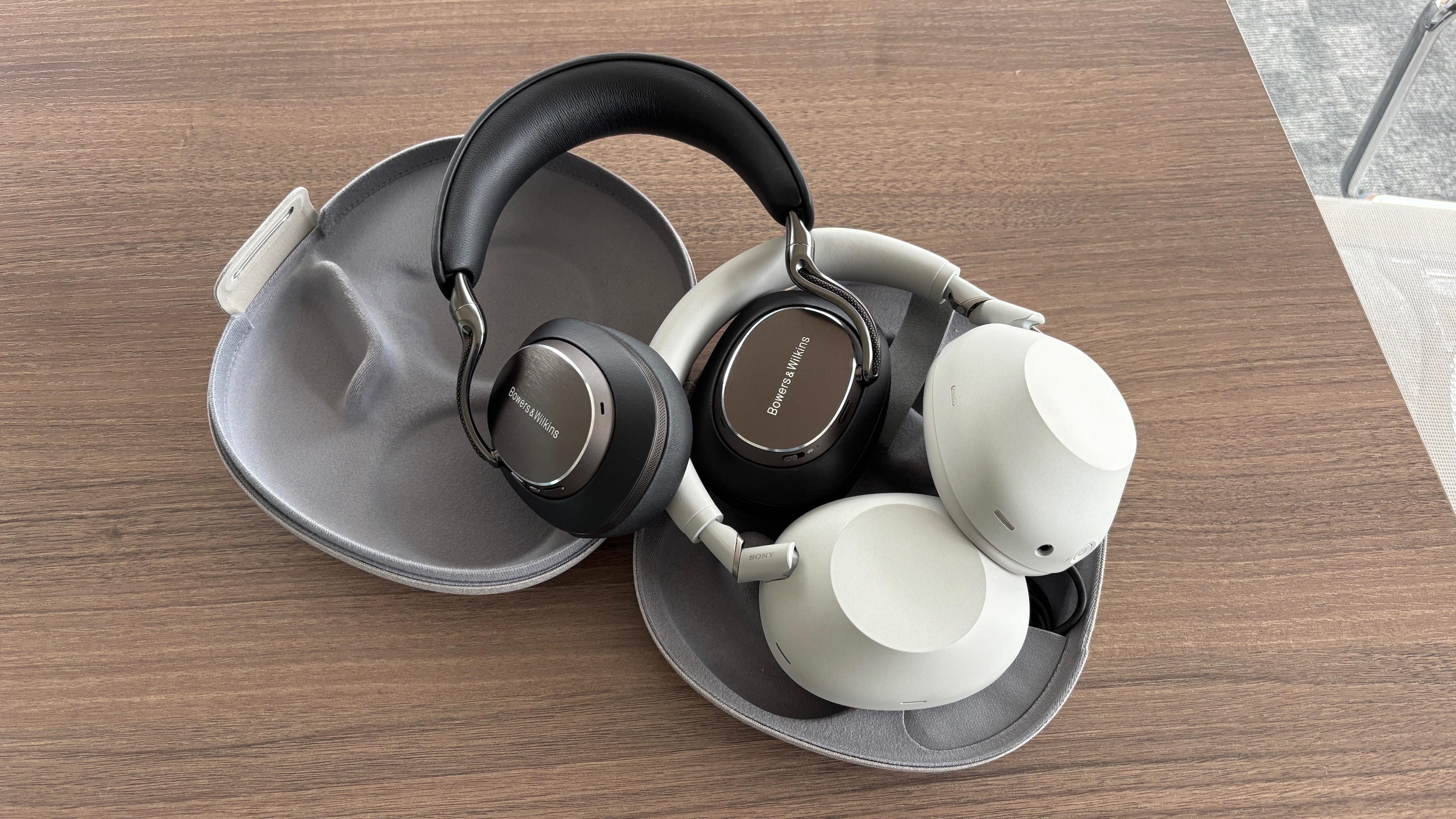
- Noise cancelling is more natural with the XM6 than Px8 S2
- The XM6 cancel a wider range of sounds
- Wind noise especially is more noticeable with the Px8 S2
- Calls are clearer with the XM6, though the Px8 S2 are still clear
B&W has paid attention to the ANC, upping the number of mics from six on the previous model to eight (four on each earcup) on the S2. Six of these monitor external noise, while two do so internally to check on the driver output. Make a call, and all eight mics get involved. And there's a new algorithm to improve call quality.
They are a step up on previous B&W pairs, but their ANC isn't a match for the XM6's. They let in more noise across the frequency range, be it engine sounds, voices, or the high-frequency whines of a petrol-powered lawnmower. Wind noise is also more noticeable.
The XM6 excel in this area. Their ANC never seems anything but natural, while also reducing external sounds to barely more than a whisper. They have a total of 12 mics on noise-cancelling duties, alongside Sony’s new HD Noise Cancelling Processor QN3 which is seven times faster than that inside the XM5.
The QN3 also includes what Sony calls a ‘look-ahead noise shaper’ to improve the digital-to-analogue process by reducing distortion and improving dynamics. The adaptive NC optimiser constantly adapts to changes in your environment, so the ANC is always optimised for peak performance.
They are "wonderfully consistent in dealing with bass and midrange rumblings and just giving you a nice clear background on which you can place your music," we wrote in our review.
Call quality is superb. That's thanks to Sony’s precise voice pickup technology, which works arm-in-arm with the mics and beamforming AI to nullify background noise so you can focus on the caller's voice.
The S2 "deliver your voice with good clarity and expression," we wrote in our review, and vocals never sound overly processed as on some pairs. But because they let in more background sound, voices aren't as clear as with the Sonys.
** Winner: Sony WH-1000XM6 **
Bowers & Wilkins Px8 S2 vs Sony WH-1000XM6: sound
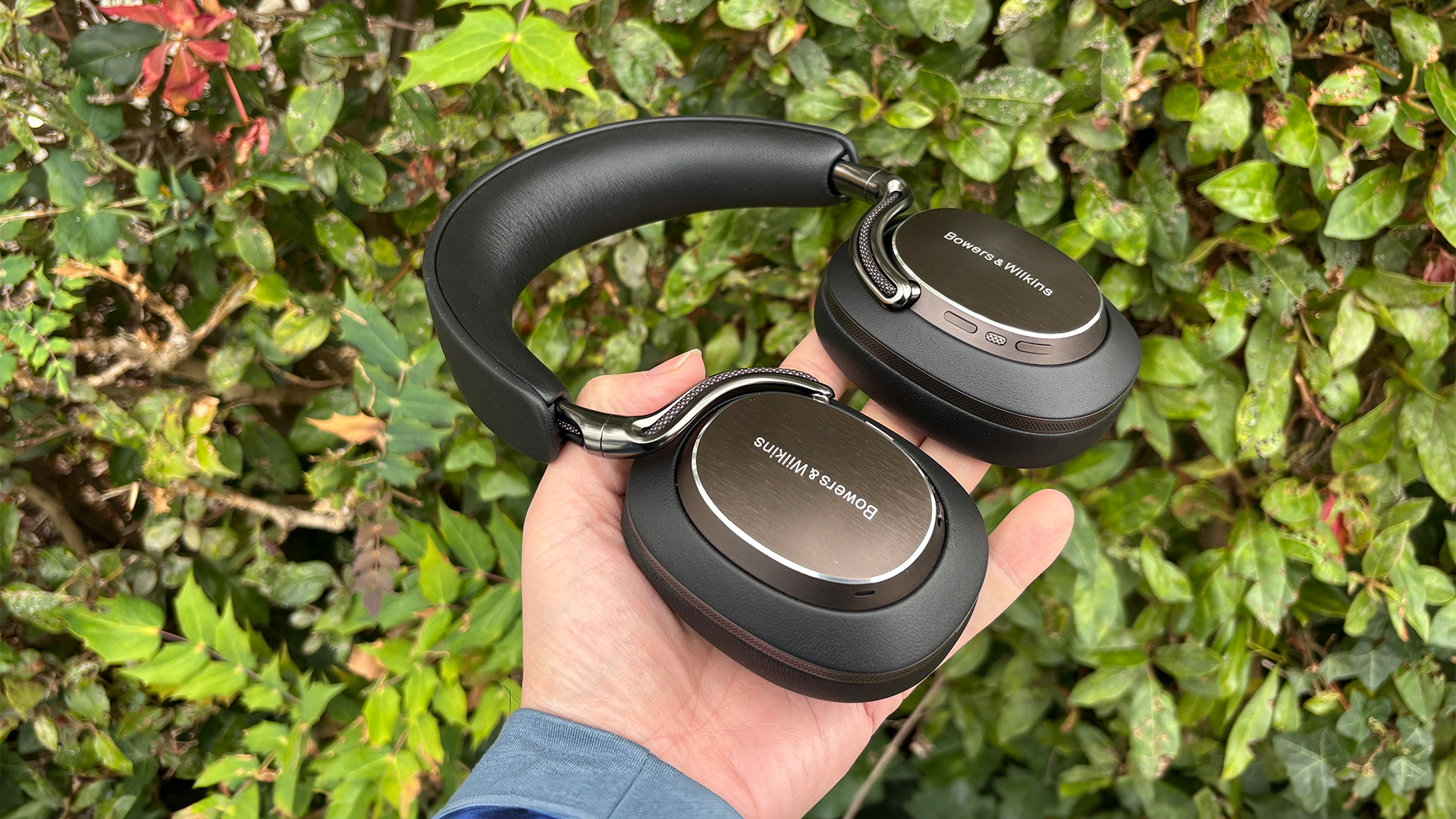
- Px8 S2 sound purer and more detailed; the XM6 excel for musicality
- The Px8 S2's sound is more 'hi-fi', the XM6 are more entertaining
- Px8 S2 have precision, accuracy, power and authority
- XM6 sound dynamic, precise and rhythmic
Sonically, the Px8 S2 are a treat. They have plenty of power and authority, with a bass weight that's significant yet kept on a tight leash. They have precision and accuracy in spades, while Everybody’s Changing by Keane is "delivered with punch, dynamism and exceptional clarity," we wrote in our review.
They're engaging and more natural-sounding than their rather analytical forebears. They even deal well with the tricky 15 Step by Radiohead, keeping a hold on all of the various threads and displaying an impeccable sense of timing.
In short, they sound very good indeed. But then so do the XM6.
In fact, we described them as offering "the most detailed, dynamic, precise and open sound we’ve heard from a wireless Sony flagship". And if you've read our reviews of Sony flagships past, you'll know that's high praise indeed.
Detail levels are excellent, although they are pipped by the Bowers & Wilkins, with a great sense of space around the notes, putting across the full dynamic contrast. Elements are knitted together skilfully, and the sense of rhythmic drive is compelling. They place instruments around the soundscape with precision, while the bass is "meaty yet well defined." Tasty.
Sonically, the Px8 S2 are superior. They have more detail and insight, and a more 'hi-fi' sound. The Sonys have amazing musicality, but if it's purity of sound you're after, it's the Px8 S2 all the way.
** Winner: Draw **
Bowers & Wilkins Px8 S2 vs Sony WH-1000XM6: verdict
- The XM6 are better all-rounders and better suited to most people
- They're also significantly cheaper than the Px8 S2
- But the Px8 S2 sound better, and definitely feel more expensive
Both of these pairs of headphones excel at what they set out to do. The B&W are a sumptuous, luxurious pair that redefine build quality. They also sound superb.
The Sonys are another worthy entry in the firm's flagship line. Because of their cheaper price, broader feature set and superior noise cancellation, they're the better bet for most people. But if you want luxury and sonic supremacy, the Px8 S2 are a great shout.
MORE:
Read the full Sony WH-1000XM6 review
And the Bowers & Wilkins Px8 S2 review
Sony WH-1000XM6 vs WH-1000XM5: which wireless headphones are better?
Joe has been writing about tech for 20 years, first on staff at T3 magazine, then in a freelance capacity for Stuff, The Sunday Times Travel Magazine (now defunct), Men's Health, GQ, The Mirror, Trusted Reviews, TechRadar and many more. His specialities include all things mobile, headphones and speakers that he can't justifying spending money on.
You must confirm your public display name before commenting
Please logout and then login again, you will then be prompted to enter your display name.

